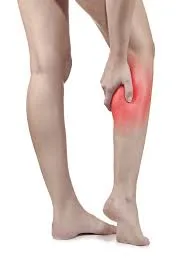We’ve all felt it—that sudden, sharp pain when a muscle tightens up and refuses to relax. That’s a muscle cramp. Whether you’re in the middle of a workout, lying in bed, or just moving in a certain way, cramps can be both surprising and painful. Let’s explore why they happen in simple terms.
What is a Muscle Cramp?
A muscle cramp, often called a “charley horse” when it happens in the leg, is a sudden, involuntary contraction or tightening of a muscle. This tightening can be very painful and can last from a few seconds to several minutes.
Common Causes of Muscle Cramps
- Dehydration
Muscles need water to work properly. When we don’t drink enough water, our muscles become more prone to cramping. This is especially common during hot weather or after physical activity, when we lose water through sweat. - Overuse or Strain
Doing too much too fast can lead to muscle cramps. If we push our muscles beyond their limits, like lifting something too heavy or exercising without warming up, they can cramp up as a way of saying, “Slow down!” Even sitting or lying in an awkward position for too long can trigger a cramp. - Lack of Certain Minerals
Our muscles rely on minerals like potassium, calcium, and magnesium to contract and relax smoothly. If we’re low on these nutrients, our muscles can start to misfire, leading to cramps. This can happen if our diet doesn’t provide enough of these minerals or if they get lost through sweating. - Nerve Compression
Sometimes, a muscle cramp can happen because of pressure on a nerve. For example, sitting for a long time in an uncomfortable position can compress the nerves that connect to your legs, causing cramping. Some people with back issues may experience cramps because of nerve compression as well. - Poor Blood Flow
Muscles need a steady supply of blood to get oxygen and nutrients. If blood flow to a muscle is restricted, such as when you’re sitting or lying in an odd position, the muscle may cramp. - Medication Side Effects
Certain medications can increase the chances of cramping. Diuretics, for instance, which help the body get rid of excess water, can sometimes lead to dehydration and a loss of minerals, causing cramps. Always check with a doctor if you notice cramps after starting a new medication.
Preventing Muscle Cramps
While some cramps are hard to avoid, here are some simple ways to reduce your chances of experiencing them:
- Stay Hydrated: Drink plenty of water throughout the day, especially when you’re active or it’s hot outside.
- Eat a Balanced Diet: Include foods rich in potassium, calcium, and magnesium, like bananas, oranges, dairy, nuts, and leafy greens.
- Warm Up and Stretch: Before any physical activity, take a few minutes to warm up and stretch your muscles.
- Move Around: If you’re sitting for a long time, make it a point to stand up, stretch, and move your legs to keep blood flowing.
When to See a Doctor
Most muscle cramps are harmless and go away on their own. However, if you get them frequently, or if they’re extremely painful and disrupt your daily life, it’s a good idea to talk to a doctor. Sometimes, cramps can be a sign of an underlying health issue that needs attention.
The Bottom Line
Muscle cramps are common and often nothing to worry about. They can be caused by things like dehydration, mineral deficiencies, overuse, or poor posture. By staying hydrated, eating a balanced diet, and listening to our bodies, we can often avoid cramps and keep our muscles happy and healthy.


